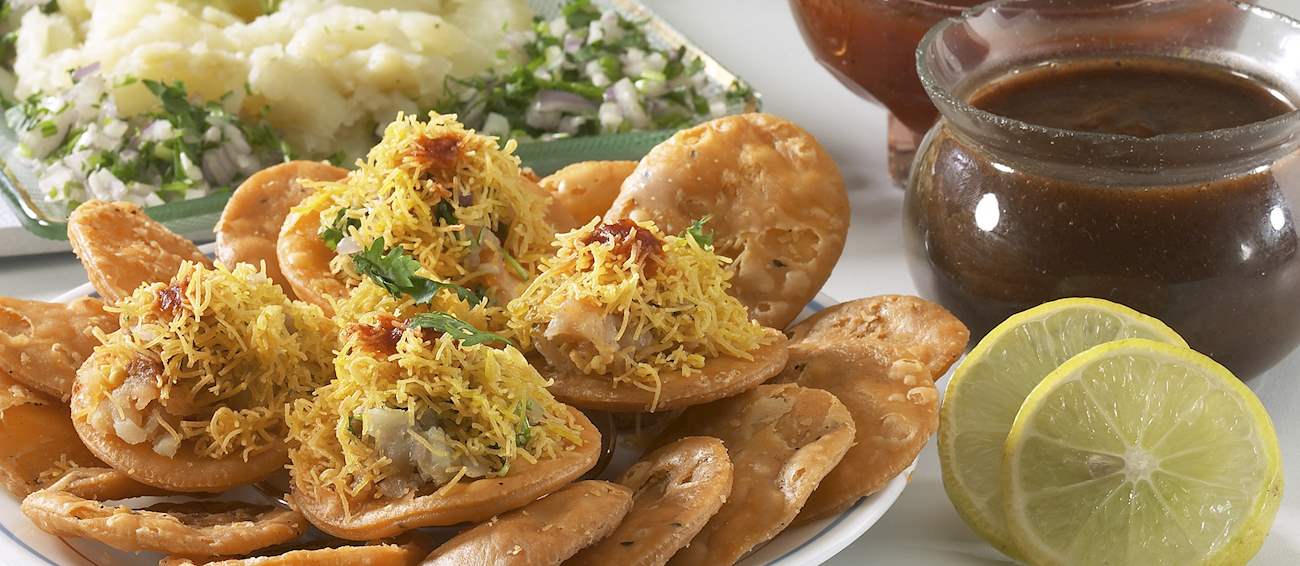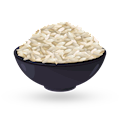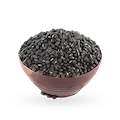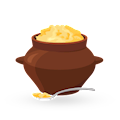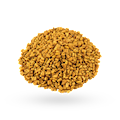MAIN INGREDIENTS
The thin pancake known as dosa is one of the most famous Indian dishes. It is made with soaked rice and black gram beans, which are ground into a paste and mixed to create a thick batter, usually left to ferment overnight. The mixture is enriched with a handful of fenugreek seeds, which give dosa its distinctive golden brown color and a delicious, crispy texture.
It is then baked on a hot oiled griddle, pertaining a delicate, thin texture and round shape. Indian dosa is a staple dish in the entire country, but some believe that dosa had originated in the south Indian state of Tamil Nadu. It is an ancient dish, whose origins are traced back to the 1st century AD, when it was first mentioned in Tamil literature.
VARIATIONS OF Dosa
MOST ICONIC Dosa
View moreChaat is a term signifying a huge variety of Indian street foods, snacks, or small meals which usually combine salty, spicy, sweet, and sour flavors. The name chaat is derived from a Hindi verb chaatna, meaning to lick, possibly referring to the finger-licking good quality of the dishes.
Chaats are usually small, consumed on their own as a snack, or combined with other dishes to form a big meal. Throughout India, Pakistan, and Bangladesh, chaat can be found at chaatwallas (street vendors), serving various dishes, from stuffed bread to deep-fried pastries with accompanying dipping sauces.
VARIATIONS OF Chaat
MOST ICONIC Chaat
View moreMAIN INGREDIENTS
A traditional southern Indian dish known as masala dosa is popular throughout the country, made from a batter of soaked rice and lentils that is baked into a thin pancake and usually stuffed with potatoes, onions, and mustard seeds. The dish is often garnished with grated coconut and chopped coriander.
With its huge popularity, there are also some variations of the dish, such as mysore masala dosa, rava masala dosa, onion masala dosa, and paper masala dosa. It is usually consumed as a quick snack or as a part of any meal of the day.
MOST ICONIC Masala dosa
View morePapri chaat is an Indian dish consisting of deep-fried wafers (papri), tamarind and mint chutney, black grams, potatoes, and dahi. The ingredients are layered, and the dish is usually sprinkled with sev—fried chickpea noodles—and chaat masala—a spice mix which combines cumin, coriander, dried mango and ginger, as well as chili, asafoetida, and black pepper.
The dish is a common street food item, and it is usually enjoyed as a filling, convenient snack. It is mainly found in North India, Pakistan, and Bangladesh.
Due to their crunchy texture and a variety of different flavors, samosas provide a perfect introduction to the world of Indian cuisine for newcomers. These deep-fried, triangular pastries are filled with a variety of ingredients ranging from vegetables to meat, such as onions, lentils, spiced potatoes, peas, or ground meat.
It is said that the popular, golden-brown snack travelled to India along the old trade routes from Central Asia, which is why samosas are also prevelent in Middle Eastern countries where they are typically served for Ramadan. In Saudi Arabia, for example, they are typically filled with meat or cheese and can be shaped as triangles, squares, and rolls.
VARIATIONS OF Samosa
MOST ICONIC Samosa
View moreMAIN INGREDIENTS
Panipuri is a street snack that is extremely popular in India, Bangladesh, Pakistan, and Nepal. Small in size, it consists of a hollow puri that is fried until crispy, then stuffed with a combination of flavored water called pani, tamarind chutney, chaat masala, potatoes, onions, hot chillis, and chickpeas.
In North India, panipuri is known as golgappa, gol referring to the crispy shell, and gappa referring to the eating process, since these small snacks are typically eaten one at a time. It is believed that panipuri originated in Uttar Pradesh and gradually spread in popularity throughout the country and outside of it.
MOST ICONIC Panipuri
View morePav bhaji is a popular street snack originating from the Indian state of Maharashtra. It consists of a vegetable curry that is typically served with a soft bread roll known as pav. The dish was invented in the 1850s as a midnight meal by street vendors who prepared it with all the leftover vegetables from the day, which were then mashed and combined with spices and ghee butter.
Originally, it was a quick and easy meal for Mumbai's textile mill workers, but today it is a favorite street snack that is also served in some restaurants in Mumbai. There are a lot of varieties of the basic pav bhaji, with added cheese, paneer, mushrooms, plantains, and even dried fruits thrown in the flavorful curry mix.
MOST ICONIC Pav bhaji
View moreMAIN INGREDIENTS
Upperi is a popular Indian snack made by frying thin slices of plantain in coconut oil. The chips are flavored with salted water while they are still frying in oil. The snack is a specialty of Kerala, especially during the Onam harvest festival, when these salted chips take center stage in a banana leaf during Sadya, a vegetarian banquet.
It is available throughout the year, but during Onam, all of the shops are stacked with fresh yellow chips sealed in plastic bags. It is recommended to pair upperi with a hot cup of coffee or tea for a delicious snack.
MAIN INGREDIENTS
Paper dosa is a traditional pancake originating from Tamil Nadu. These wafer-thin crispy pancakes are usually made with a combination of basmati rice, urad dal (black grams), fenugreek seeds, ghee, and salt. The rice is processed into a thick paste and soaked in water.
The urad dal is also soaked in water, and both are left to soak overnight. The next day, urad dal is drained, mixed with fenugreek, and processed into a paste. The two pastes are mixed together, left to stand overnight, and seasoned with salt. The batter is then fried in a skillet over medium heat until dry, and some ghee is spread in the center and on the sides.
Pakora is a savory, deep-fried Indian snack made with pieces of vegetables such as cauliflower and eggplant. Although it is a quintessential Indian snack that can be easily found on numerous street corners, it can also be made at home. Traditionally, pakoras are at their most popular during spring, when the locals enjoy fried foods to celebrate the monsoon season.
The snack comes in many varieties but is usually made from two main ingredients - potato, and another vegetable or meat of choice, which is then dipped in flour and deep-fried in ghee. Pakoras are usually seasoned with turmeric, salt, chili, or other spices.
MOST ICONIC Pakora
View moreTasteAtlas food rankings are based on the ratings of the TasteAtlas audience, with a series of mechanisms that recognize real users and that ignore bot, nationalist or local patriotic ratings, and give additional value to the ratings of users that the system recognizes as knowledgeable. For the “Top 79 Indian Snacks” list until April 15, 2025, 3,635 ratings were recorded, of which 2,599 were recognized by the system as legitimate. TasteAtlas Rankings should not be seen as the final global conclusion about food. Their purpose is to promote excellent local foods, instill pride in traditional dishes, and arouse curiosity about dishes you haven’t tried.
